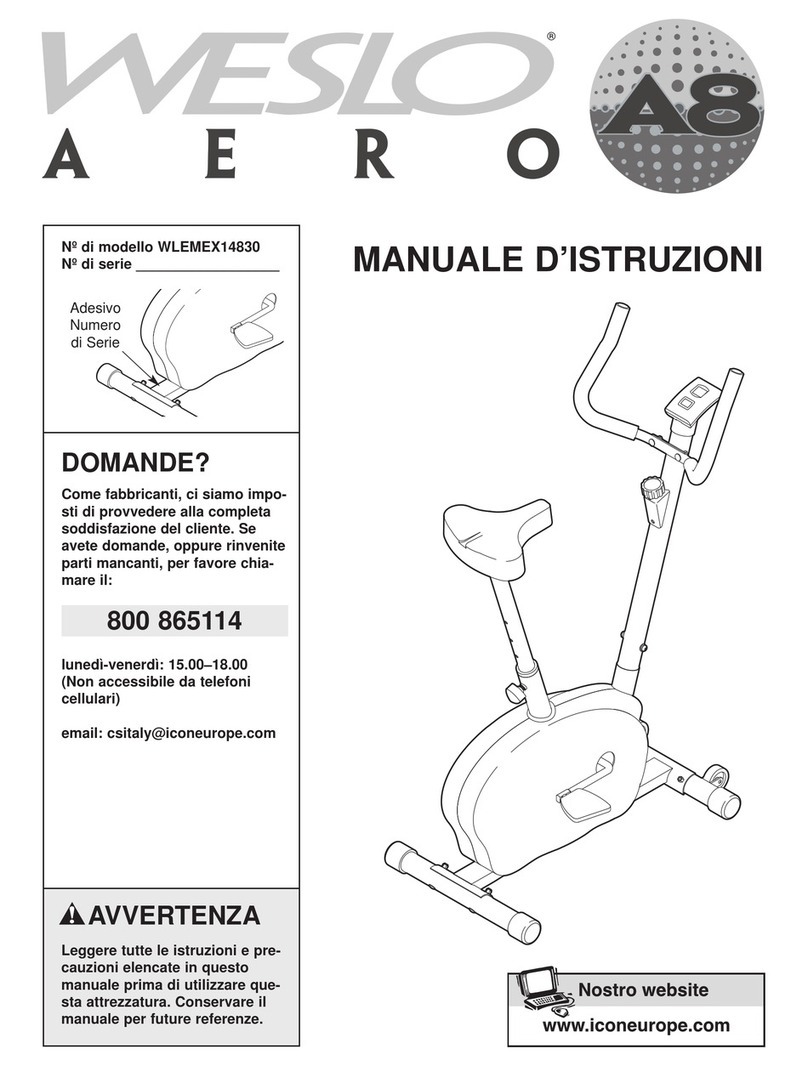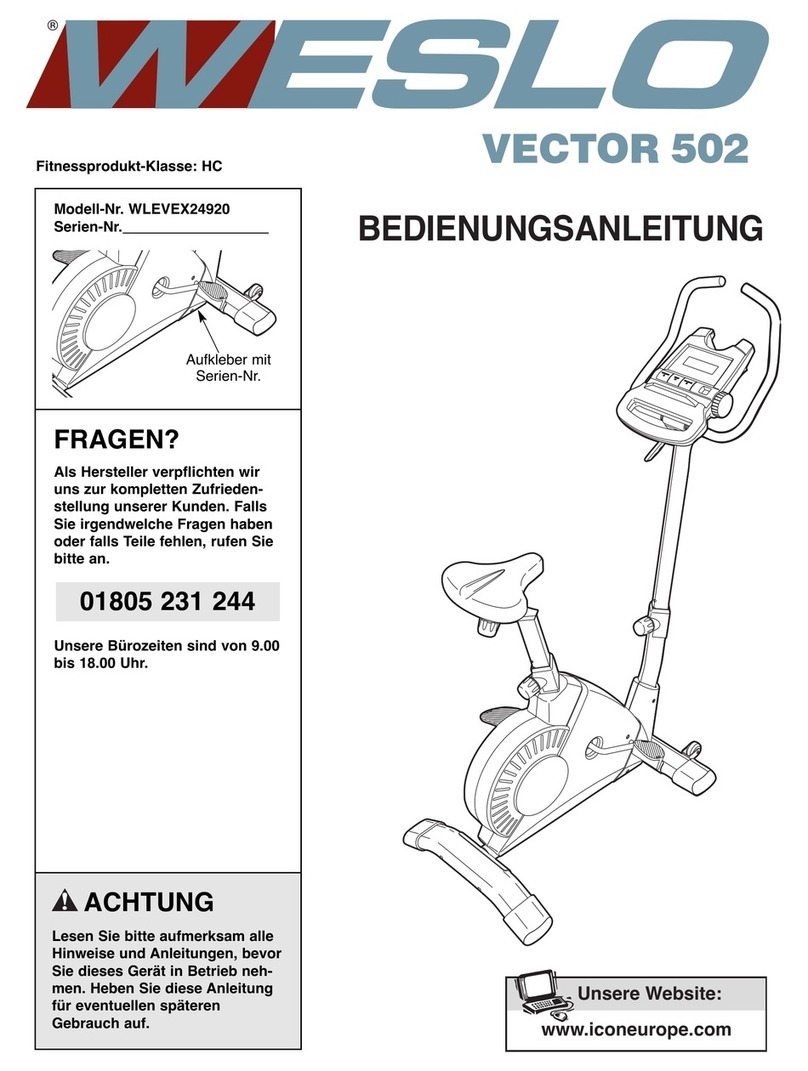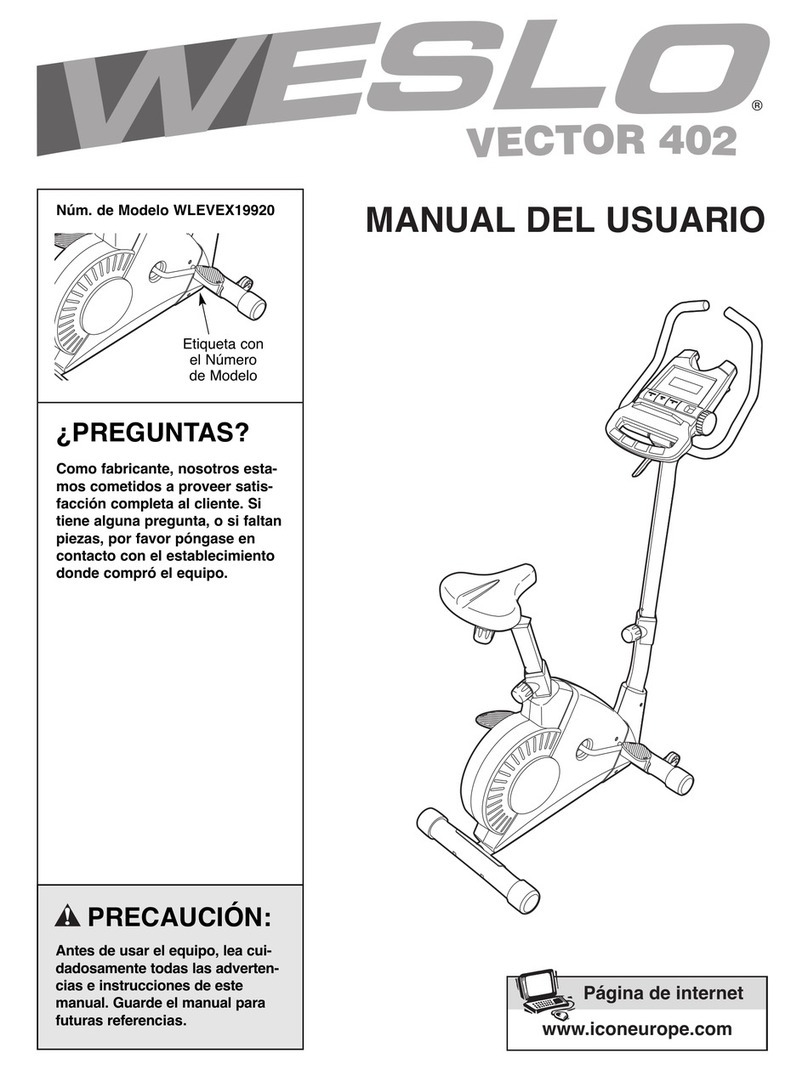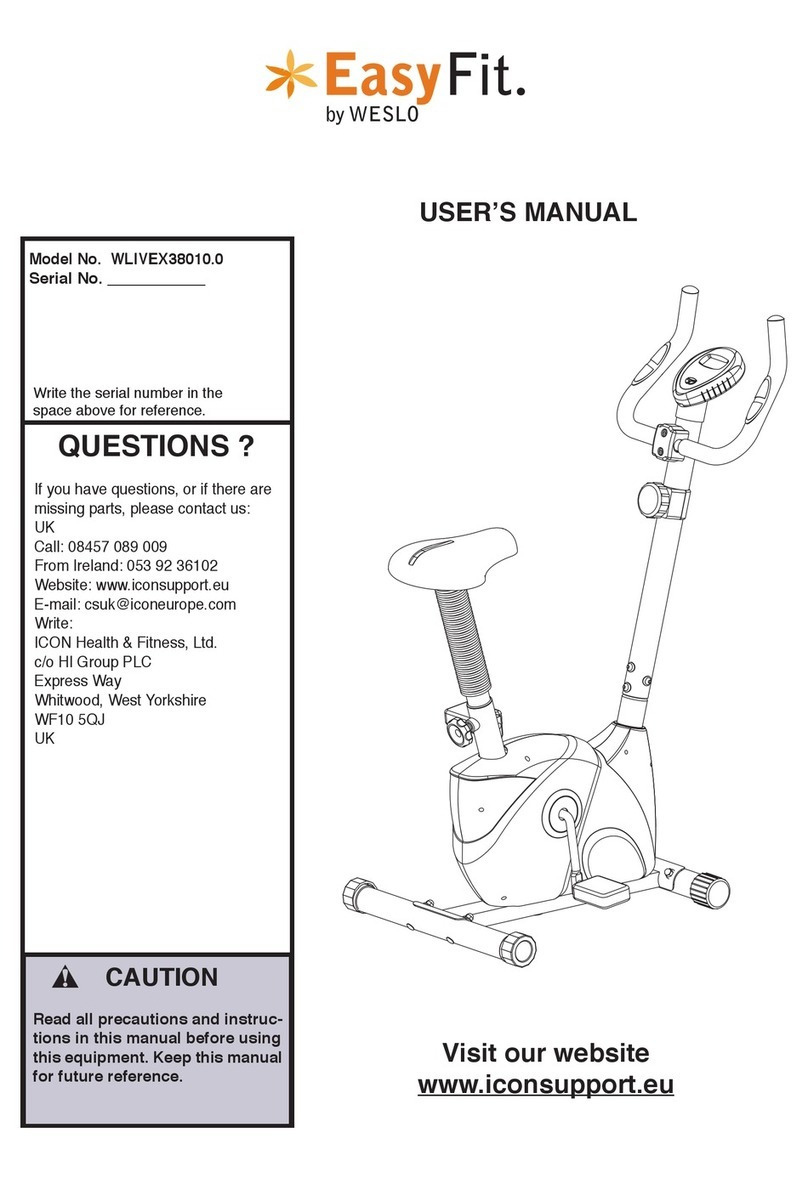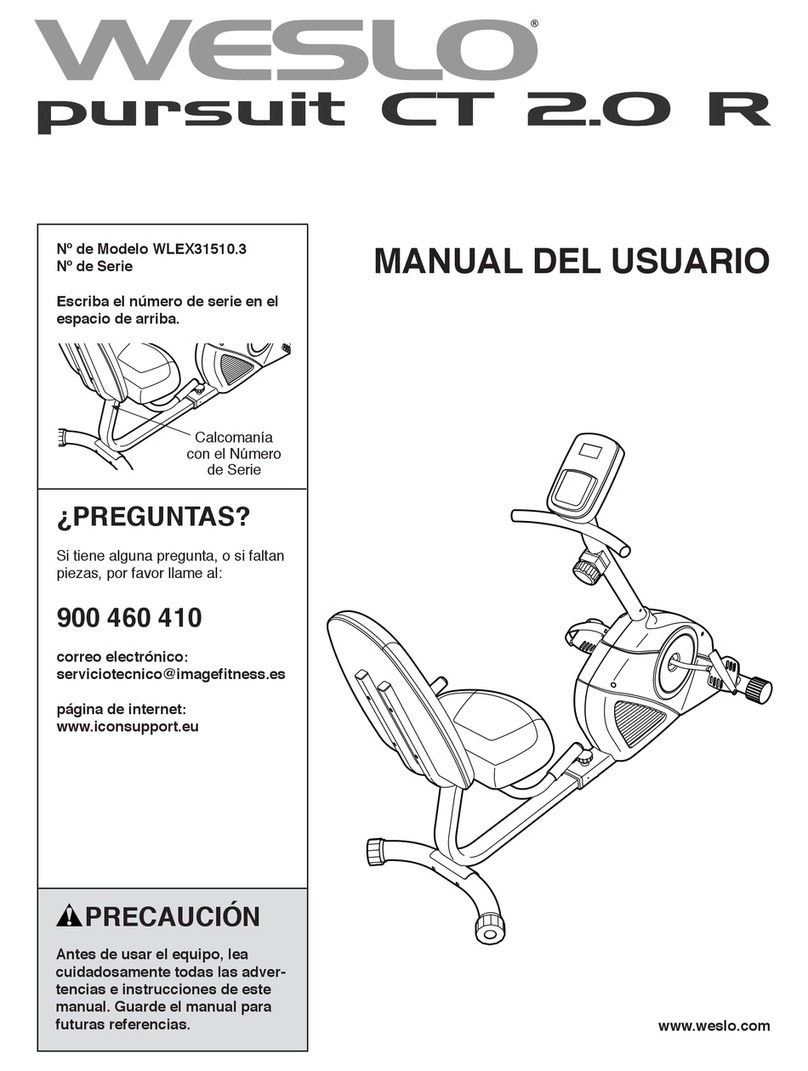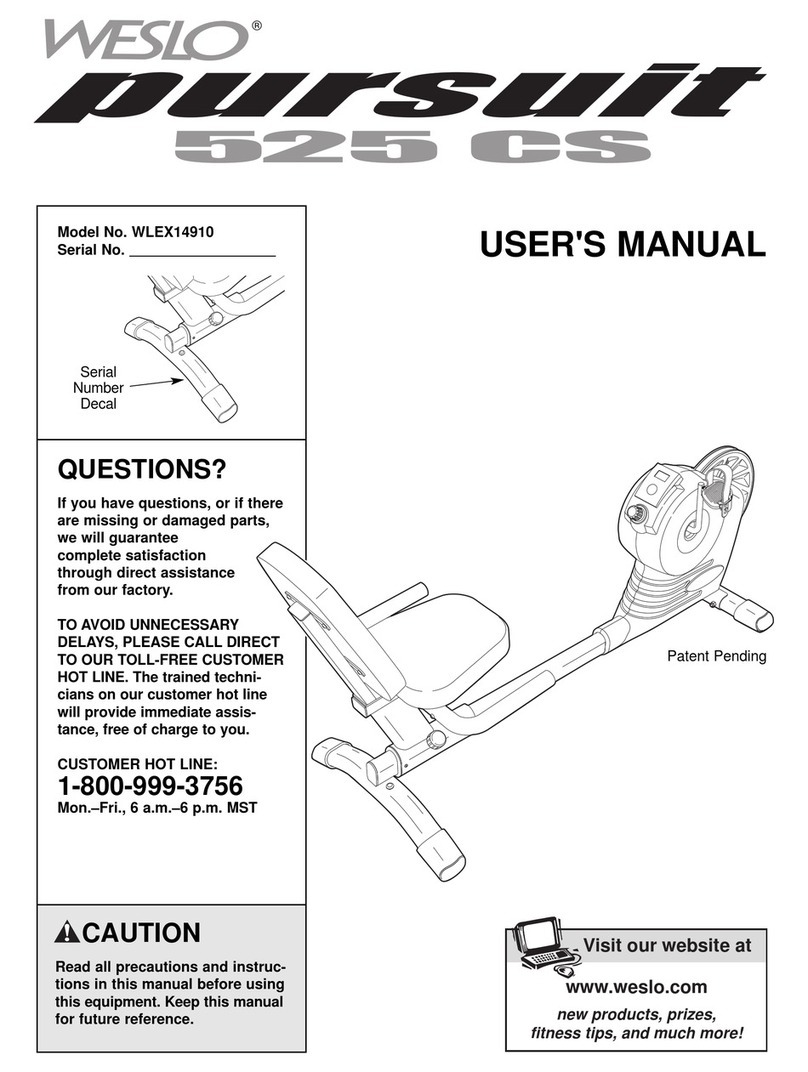10
To cancel the
scan mode,
press the Mode
button. The
mode bar
below the scan
symbol will dis-
appear. The
upper section
of the display will then show only the elapsed
time, and the lower left section of the display will
show only the number of calories you have
burned. Press the Mode button again. The upper
section of the display will then show only the dis-
tance pedaled, and the lower left section of the
display will show only the number of fat calories
you have burned. To select the scan mode again,
press the Mode button repeatedly until a mode
bar appears below the scan symbol.
To reset the display, press the On/Reset button.
Note: The console can show speed and dis-
tance in either miles or kilometers. To change
the unit o measurement, hold down the
On/Reset button or about six seconds. When
the batteries are replaced, it may be necessary
to reselect the desired unit o measurement.
Measure your heart rate i desired.
Note: I there
are thin sheets
o plastic on
the metal con-
tacts o the
pulse sensor,
peel o the
plastic.
To use the pulse sensor, hold the handle on the
console, with your right palm covering the two
right contacts and your left palm covering the two
left contacts. Avoid moving your hands. When
your pulse is detected, the heart-shaped indicator
in the display will flash each time your heart
beats and two dashes (– –) will appear. After a
moment, your heart rate will be shown. For the
most accurate heart rate reading, continue to hold
the handgrips for about 15 seconds.
When you are inished exercising, the console
will automatically turn o a ter a ew minutes.
If the pedals are not moved and the console but-
tons are not pressed for a few minutes, the con-
sole will automatically turn o to conserve
the batteries.
HOW TO USE A PACE PROGRAM
Turn on the console.
See step 1 on page 9.
Select one o the our pace programs.
Each time the
console is
turned on, the
manual mode
will be selected.
To select a pace
program, press
the Program
button repeated-
ly until the number 1, 2, 3, or 4 appears in the
upper right corner of the display.
The four profiles on the right side of the console
show how the target pace will change during the
programs. For example, profile number 1 shows
that during program 1, the target pace will
increase near the beginning of the program, and
then decrease near the end.
Start the program.
To start the program, begin pedaling. Each pro-
gram consists of either twenty or thirty, one-
minute periods. One target pace is programmed
for each period. (The same target pace setting
may be programmed for consecutive periods.)
The target pace
settings for the
program will be
shown by the
target pace indi-
cator in the dis-
play. (The pace
indicator will
show your actu-
al pedaling
pace.) As the
target pace indi-
cator changes in height during the program,
adjust your pedaling pace so that both indicators
are at the same height. If your pedaling pace is
slower than the current target pace setting, an
arrow will appear next to the pace indicators to
prompt you to increase your pace; if your pace is
faster than the target pace, an arrow will prompt
you to decrease your pace.
3
2
1
6
5
Contacts
Pace Indicator
Target Pace Indicator
Handle
